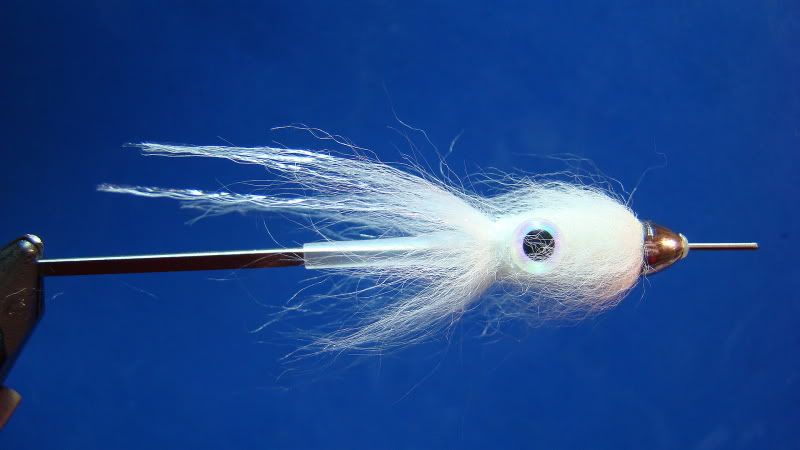 I'll finish up the month with Puget Sound's most popular streamer pattern- the Clouser Minnow. I won't spend a lot of time writing about the history of the most famous streamer pattern in existence. There's absolutely no need to here- it would take days, if not weeks, perhaps months, or even years!
I'll finish up the month with Puget Sound's most popular streamer pattern- the Clouser Minnow. I won't spend a lot of time writing about the history of the most famous streamer pattern in existence. There's absolutely no need to here- it would take days, if not weeks, perhaps months, or even years! The Clouser Minnow's pedigree is long, distinctive, and rest assured, will live on for generations to come. I highly doubt there will ever be another streamer pattern to surpass the Clouser's legacy.
If you fish Puget Sound, or any freshwater/saltwater destination, the Clouser Minnow is a MUST HAVE fly!
Material:
The myriad of materials used are numerous. Everyone seems to have a favorite and I am no exception! Here's what I utilized, and normally use, for fishing and this step-by-step pictorial:
Thread: Uni-thread Mono, clear, 4m
Hook: Daiichi 2546 #6
Eyes: Spirit River Real-eyes Plus, Nickel/Pearl, 5/32"
Wing (bottom): White australian sheep
Wing (top): White autralian sheep over a few strands of UV Minnow Belly.
Topping: Black Light Angel Hair
Step 1:
Place hook in vise. Wind a single layer of thread at approximately 1/3 of the hook length.
Step 2:
Place eyes over the layer of thread and make a few figure 8 wraps to ensure proper position. If satisfied with positioning, apply a small drop of Zap-A-Gap to thread wraps. Continue with firm wraps and super glue as necessary.
Step 3:
Tie in a small bunch of australian sheep behind the eyes and secure with wraps winding to the hook bend and returning to the starting point. Wind thread forward of the eyes. Bring butt ends over the eyes and secure bottom wing.

Step 4:
Remove hook from vise. Place fly upside down in vise and lock in place. Tie in a few strands of UV Minnow Belly in at the mid way point. Lock material in place by bring the UV Minnow Belly back over the eyes.


Step 5:
Tie in top wing. Use a little more hair to provide more profile. The hair should be slightly longer than the bottom wing.

Step 6:
Tie in approximately 15 to 25 strands of Angel Hair at the midway point. Lock in place by bringing the Angel Hair back over the eyes. Build a small but proportionate head with thread. The Angel Hair should be visible through the thread wraps. Apply a few coats of head cement (or apply a single coat of epoxy).

Finshed!
A couple things to keep in mind:
1) Do not tie the eyes too close to the hook eye. The number one mistake most tiers make.
2) Tie the wing(s) sparse.
If you haven't had a chance to hit the "Benchside Fly Tyer's" "Like" button on Facebook now would be a great time to do so... I will be drawing a name around 4PM ( 01 March) for a large patch of australian sheep.
Enjoy!









































